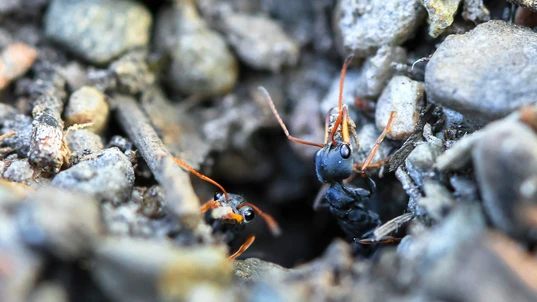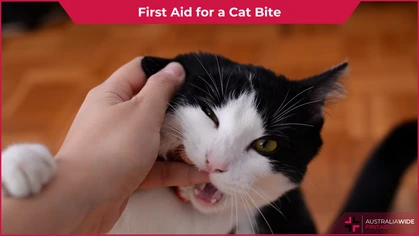Ants Adelaide: A Comprehensive Guide

Bites and Stings

Ants form a massive part of Adelaide's local ecosystem. As well as being natural pest control agents, they help pollinate native plants. However, many of Adelaide's common ant species can inflict nasty stings and trigger anaphylaxis.
Ants play a necessary role in Adelaide’s local ecosystem. Ants are natural pest control agents and help pollinate native plants. While ants are nature’s recycling workers, you don’t want them in your house. Ants can spread disease, destroy buildings, and chew through electrical wiring. Some ants around Adelaide also have a nasty bite that may trigger anaphylaxis. Adelaide has a variety of ant species. Hopper ants, inch ants, green head ants, are some that are common to Adelaide and surrounds and can inflict a nasty bite and severe allergic reaction. Knowing how to identify these ants and their environment can help you reduce your risk of ant bites or infestation. If you are interested in learning more about how to recognise ant infestations and treatment for bites, enrol in one of our Adelaide first aid courses:
The hopper ant, otherwise known as the jack jumper ant, is similar to bees and wasps in that their sting is in their tail, rather than their jaws. Their sting can be very painful and cause local swellings.
Hopper ant
Hopper ants, also known as jack jumper ants, jumping jacks, or jumping ants, are native ants to Australia and are endemic around Adelaide. Hopper ants are distinguished by their name as they jump, or hop when threatened. Hopper ants can jump up to 10cm when defending themselves. Hopper ants are medium sized, have a black body with pale orange/brown jaw/pincers and limbs. Hopper ants’ natural habitat is woodland and open forest where they forage under wattles and eucalypts. As residential and human housing developments encroach on their natural habitat they adapted to enjoy fine gravel or sandy soil, collecting small insects that feed on honeydew or nectar for their young. In the hopper nests, the queen can survive up to ten years and lays all the eggs, while the worker ants only live up to two years. Hopper ants are aggressive and their sting is painful and can cause swelling. Hopper ants inject venom from their tail end, while holding the victim in their jaws. In the Adelaide Hills, more people are treated for hopper ant bites than any other as their venom can cause severe allergic reactions.
Inch ants, otherwise known as bull ants or bulldog ants, have a large body and eyes, and their head and abdomen are typically bright red or orange in colour. They are not afraid to attack threats of any kind.
Inch ant
The inch ant is commonly found around Adelaide and the Mount Lofty Ranges. They are one of Australia’s largest ants. Fossils from inch ants have been found all over the world and some date back to 50 million years. Inch ants are now only found in Australia. With wasp-like bodies of light brown colour, inch ants prefer natural, dry woodland, grasslands and rural areas. Inch ants have small colonies and are aggressive, will sense intruders from up to one metre, and attack if their nest is disturbed. Inch ant nests are often hidden with small entrances so it can be hard to spot their nests. Like hopper ants, an inch ant bite is painful and can cause swelling and severe allergic reaction.
The Green-head ant is incredibly resilient. Not only can they forage in the immediate aftermath of bush fires, but they can also continue foraging during light showers of rain. This is uncommon for many ants.
Green-head ant
Green-head ants have metallic coloured bodies that vary between a green-blue to a green-purple sheen. They are one of the most widespread ants in Australia and live in urban areas, forests and woodlands. Green-head ants are scavengers and predators that feed on animal material. They are quick to colonise in disturbed areas and are known to forage after bush fires before the embers even die out. Also known as ‘farmer’ ants, green-head ants like to protect plants and aphids that produce honeydew. Apart from humans, ants are the only species known to tame and farm other animals. A green-head ant sting is painful and can cause swelling or severe allergic reaction.First aid
- Calm and reassure the person
- Apply a cold compress to reduce swelling and pain
- Gently wash the affected area with soap and water
- Leave any blisters intact
- Monitor the casualty for signs of an allergic reaction
- If onset of allergic reaction, call Triple Zero (000) for an ambulance
- Follow anaphylaxis treatment guideline
- Follow DRSABCD and be prepared to perform CPR
How to avoid infestations
If you find your house has an ant problem, depending on the severity, you can try to deter them before calling an ant control expert:- Cover any food sources - ants love building well-define trails around food, particularly sweet things
- Keep your kitchen clean and wipe up food or drink spills immediately
- Toasters and other similar kitchen appliances are a haven for ants - clean up any food debris from them
- Keep rubbish bins sealed
- Keep compost bins sealed and covered
- Keep pet food sealed and cleaned up once your pet finishes eating
- Seal any access points such as cracks and crevices
Final thoughts
Hopper ants, inch ants and green-head ants are some common ants around Adelaide that can give a nasty sting when disturbed. Ants also spread germs, can cause structural damage to buildings and electrical wires. If you have reason to believe you have an ant infestation, it is highly recommended to call a professional pest control company. Ant bites can be painful, inflict local swelling and in some cases cause severe allergic reaction. If you are interested in learning more about how to recognise ant infestations and treatment for bites, enrol in one of our Adelaide first aid courses:
Originally published at
https://www.australiawidefirstaid.com.au/resources/ants-adelaide
as part of the Australia Wide First Aid Articles Library









